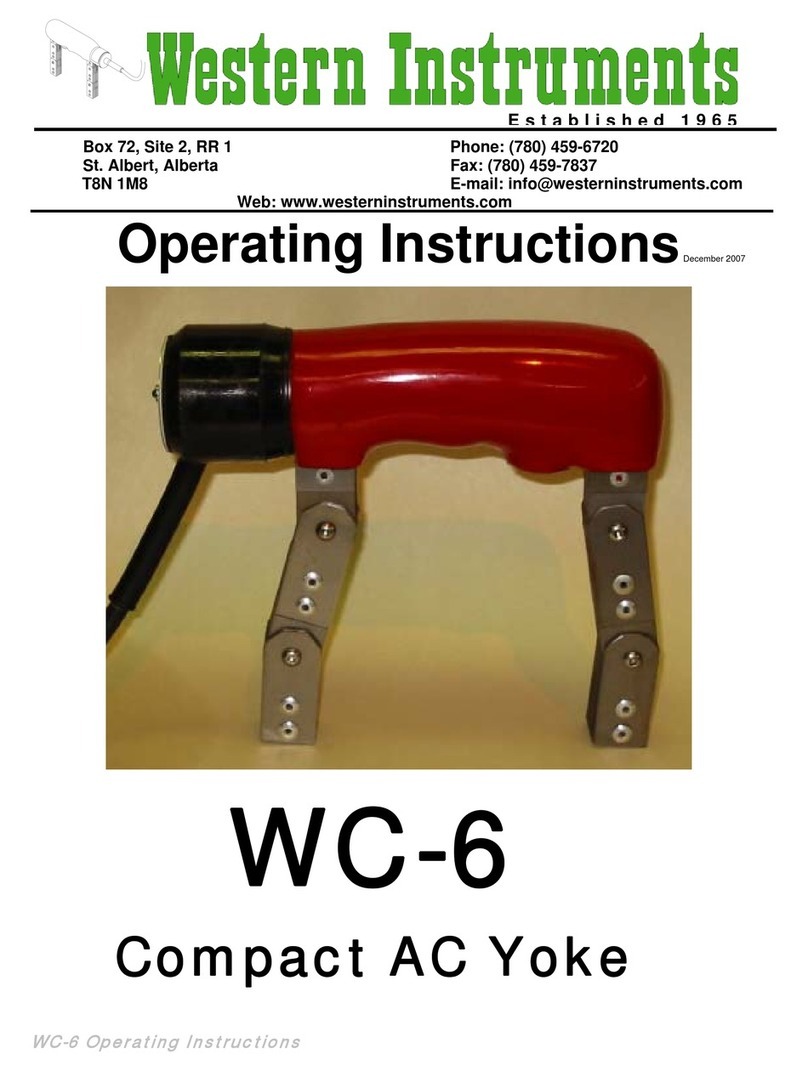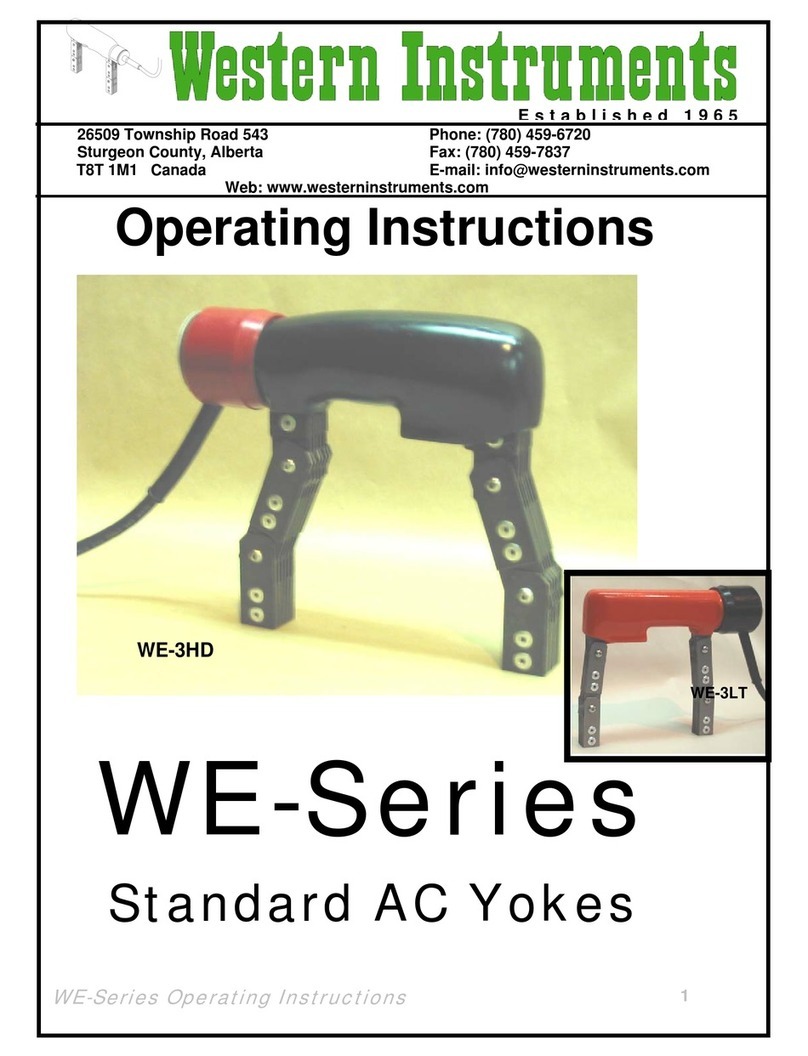
WC-9UW 7
use. However, rather than applying inhibitor, cover them with the Dielectric
Grease included in the WC-9UW Kit. Any potential problems to these
assemblies must be reported to the Distributor or Western Instruments for
instructions on corrective action.
Special attention should be employed to the sealing surface on the inside of
the Yokes Junction Tube, and the O-Ring seal on the Battery Pack and
Switch Plunger. These are the primary seal of the system, and must be free
of rust, dirt, and any foreign matter. A supply of O-Rings (42mm x 48mm x
3mm –ID/OD/Dia.) are included in the WC-9UW Kit, and should be changed
frequently. The fit of the Sealing System should be reasonably tight however,
it there is a “loose fit”, report the problem to the distributor or Western
Instruments for instructions on corrective action. Do not operate the unit in
hazardous environments when the Battery Pack in not fully assembled.
Whether industrial specifications are being observed or not, the Yoke should
be tested periodically, using certified Pull Test Bar(s) such as the W-Series
W-PT, to ensure it continues to lift the specified amount of weight. If the
unit fails such a test, first inspect the Pole Pieces to ensure they fully contact
the test weight. If the unit continues to fail, contact the Distributor or Western
Instruments for instructions on corrective action.
7. Warranty – Western Instruments warrants this product, against defects in
materials and workmanship for a period of 3 months from receipt by the end
user. If Western Instruments receives notice of such defects during the
warranty period, Western Instruments will either, at it’s option, repair, replace,
or condemn products that prove to be defective. Due to the nature of the
Underwater operational environment for this product, excessive corrosion is
considered misuse. Consumable items, such as Batteries, are warranted for
30 days from the date of shipment.
Any warranty is void if the unit has been modified in any way, or if it has been
repaired by an unauthorized agency. The end user agrees that any
equipment’s disposition, when returned for warranty work, is at the full
discretion of Western Instruments as to whether a claim is under warranty or
due to misuse. Western Instruments warranty shall overlook normal wear,
however does not include operation outside the general specification outlined
in these instructions. All warranty work is FOB Western Instruments, and any
returned units shall include a written description, by the end user, of the
fault.
Western Instruments makes no other warranty, either expressed or implied,
with respect to this product. Western Instruments specifically disclaims any
liability arising from the use of this equipment. For the correct use of the
product, refer to the Operating Instructions, furthermore we recommend
instructional training to CGSB, ASNT, or other regulatory authority
qualifications.



























